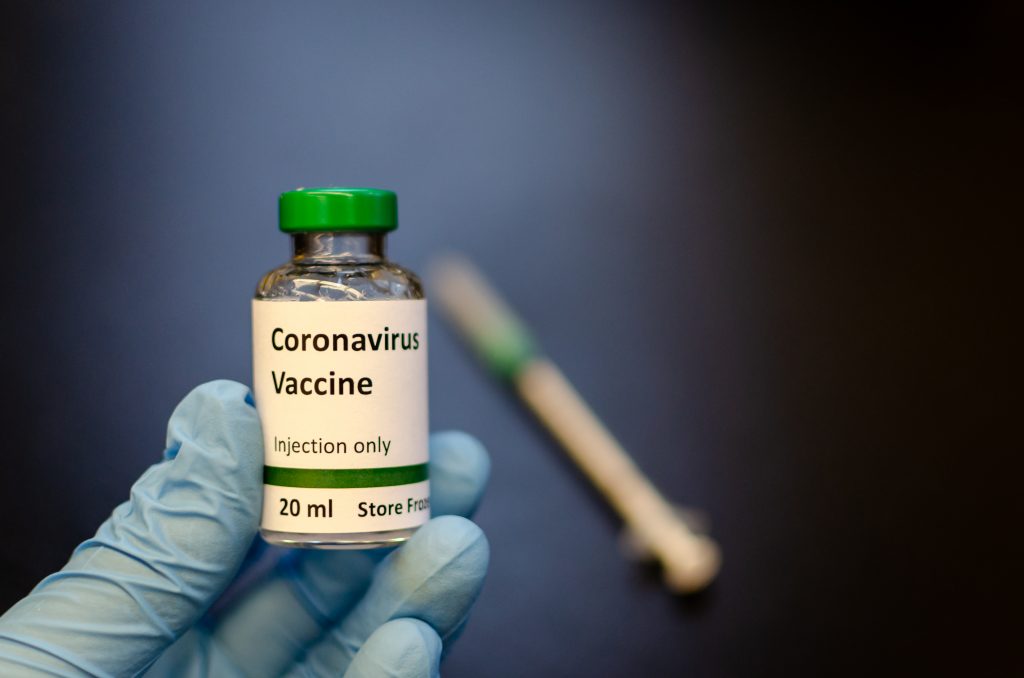RIO DE JANEIRO, BRAZIL – Under testing in Brazil, the vaccine against Covid-19 researched by Oxford University and AstraZeneca is now the furthest along in terms of development.

Soumya Swaminathan, a scientist with the World Health Organization (W.H.O.), disclosed on Thursday that 17 vaccines are currently undergoing clinical trials and are being monitored by the health agency.
The announcement came after two days of meetings between the agency and 1,300 scientists from 93 countries. Among the participants was the president of Fiocruz, Nísia Trindade Lima.
The Oxford vaccine has entered its third stage of clinical trials, while five other vaccines are in their second stage. However, a final result could still take months, and the W.H.O. itself refrains from setting a deadline. Some of the research could take between 12 and 18 months to examine the third stage results, for instance.
In Brazil, the agreement with the British provides for the purchase of vaccine batches and technology transfer. One hundred million doses would be purchased should the vaccine prove effective.
Stage three development is the final step before the product reaches the market. In Brazil, UNIFESP (Federal University of São Paulo) is leading the process.
Ana Maria Restrepo, from the W.H.O. team, said the agency is “encouraged” by the progress. However, she refrains from anticipating a conclusion or result date. According to her, there are still 150 other candidates for vaccines under research, but they have not yet entered the clinical trials stage.
According to Soumya, the focus of today’s debate is on speeding up the development of these vaccines, while maintaining scientific thoroughness. She says that since the start of the year the world has been witnessing an “explosion of knowledge and research,” with an average of 500 to 1,000 daily publications being submitted for scrutiny.
The number of cases could be ten times higher
One of the unknown factors refers to the true mortality and case rate. For Soumya, the current death and case numbers are not comparable. According to her, some studies point out that the comparison would need to be made with the case rates of the preceding two weeks.
But she also points out that among scientists, research suggests that the actual number of people infected by the virus could be ten times higher than the recorded rate. This is due to the fact that only those with more severe symptoms are ultimately tested and, in some places, many do not even have access to the tests.
However, she failed to provide details as to where these tests were conducted and when. But she explained that such conclusions emerged when tests were conducted on populations to determine the presence of antibodies.
“We know about those who are tested, or those who become very sick, or who have access to them,” she said. “In antibody research, it is clear that the number of people infected is ten times the number of people diagnosed as “cases,” which is what is counted,” he said.
Maria van Kerkhove, W.H.O.’s chief technical officer, also pointed out that another focus of research is transmission. According to her, the virus’ mutations to date have not changed its severity or transmission. But the agency is closely monitoring the situation.
The specialist has again confirmed that asymptomatic – and infected – people can spread the virus. This makes monitoring more challenging. But the agency wants to determine when exactly this transmission takes place and how often asymptomatic individuals do in fact transmit the disease.
Meat
Despite the progress, the meeting between scientists served to map what is still unknown about the virus. According to the W.H.O., researchers have shown concern about events capable of becoming a “super spreader” of the virus. This includes religious events, nursing homes, meetings, or meat production facilities. In Brazil, giant meatpackers JBS and BRF became contamination hotspots in May. In other parts of the world, this has also occurred in food markets.
One of the current studies aims to determine whether the virus can be passed on between a human and an animal, particularly on farms that serve as a base for the meat industry. According to the organization, this is crucial for establishing which hygiene measures have to be implemented.
Source: UOL

